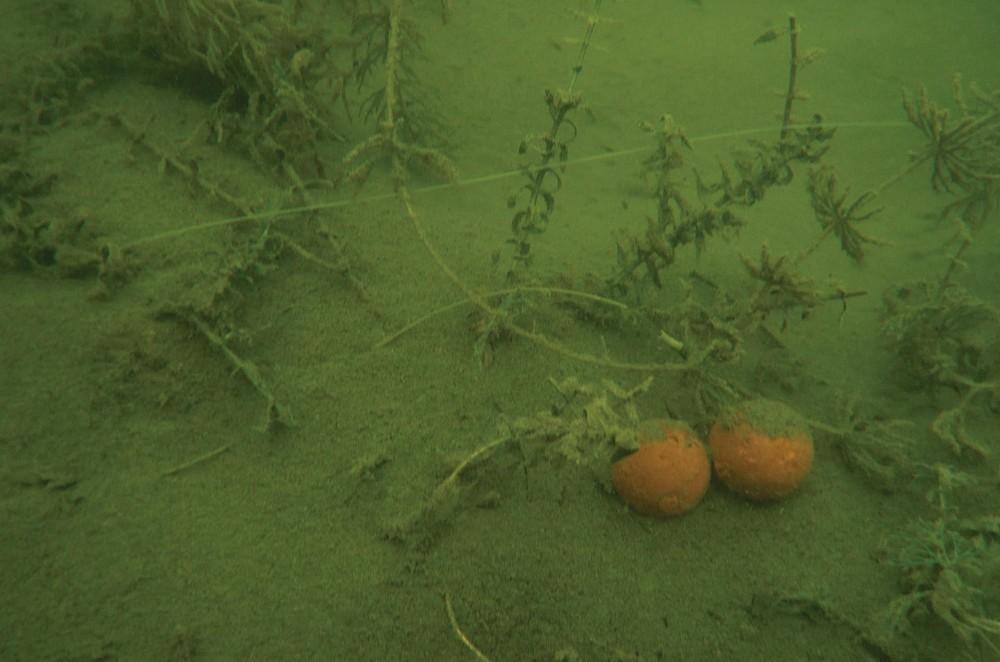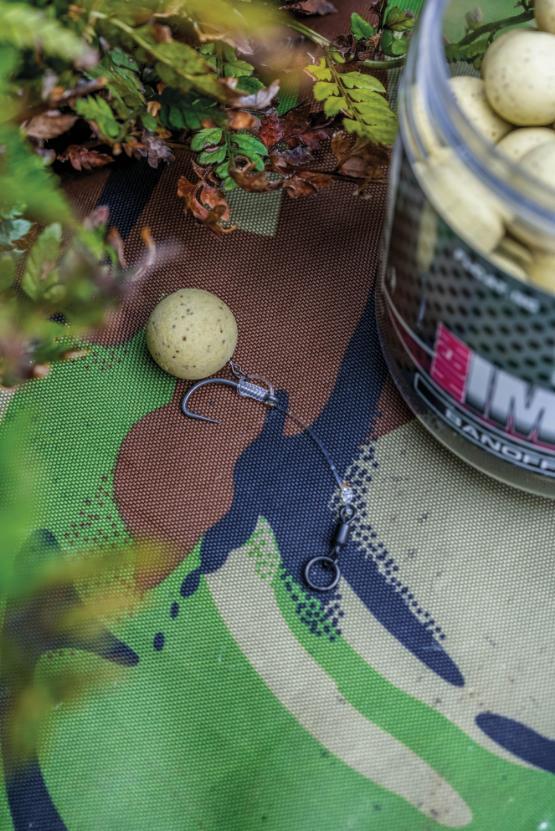Carp absolutely love silt, it is rich in natural food sources for the carp such as blood worms and other micro organisms. But which are the best rigs for fishing in silt?
Why can it be better to fish for carp over silt than gravel?
Whilst many anglers search out the lake-bed for harder spots and gravel patches, it important to remember than often these areas were previously covered in silt and it is actually as a result of the carp feeding on them, that they have exposed the underlying gravel or harder sub straight. As said above, carp love to grub around in silt given it can be a fantastic source of nutrients and food.
Not all silt however is a beacon for carp and it is worth investigating the type of silt before fishing over it. The best way to do this is with lead where you have cut some groves into it which will then collect a sample of the silt as you wind it. Good silt to fish over should smell similar to soil you would dig up in your garden. You should also break the silt apart with your fingers to look for organisms such as blood worms which carp love! Silt to avoid fishing over is silt that smells rotten and stagnant. It is usually devoid of oxygen and as such devoid of life and generally should be avoided.
Do not be put off by fishing over silt, in fact you should embrace it as carp love it! Read this article to learn which are the best and most effective rigs when fishing over silt.

The Best Rigs For Fishing in Silt
What are the best rigs for fishing in silt?
Aha! If only it were that simple. Unfortunately, there is not one correct answer when it comes to the best rigs for fishing silt. Whilst most rigs are built on the same overarching core mechanics, that being a helicopter lead set up, the business end of the rig will still vary depending on the given situation does not depend solely on the makeup of the lake-bed. There are other factors that have a bearing on what is best suited to the situation, which we will cover later on in this article after look at the lead set up.
A helicopter lead set up should be used when fishing over silt
Whilst hooklink material, bait and even lead weight may change depending on the situation, one aspect of the rig that should generally remain the same is the lead set up. Silt is soft and as opposed to gravel where your lead will sit on top of it, when you cast over silt inevitably your lead will plug itself into the silt. The heavier the lead, the deeper into the silt the lead is likely to sink. To ensure that this does not hinder your rig presentation, it is recommended to use a helicopter style set up, so that your rig can still lay on top of the silt as opposed to sticking out of the silt.

Use a helicopter lead set up when fishing over silt
So what factors determine the best rig to use when fishing over silt?
How the rig will sit on top of silt is critical to rig choice:
- One such consideration might be the distance required. A set-up that presents beautifully when used in conjunction with a one-ounce lead might not sit quite so well when attached to a 4oz distance lead in soft silt.
- The depth of the silt might make a difference to your presentation too. A long hooklink could be used to prevent the lead dragging the hook into
the silt but in very deep silt, this might not be enough. - Are the carp digging around in the silt searching for naturals or are they picking up bait which is spread over the silt?
Fishing a pop-up or a bottom bait over silt?
The way the carp are feeding will govern how you want to present your hookbait. Many anglers will want their hookbait on top of the silt where it is visible, however, that isn’t necessarily the most effective way.
Carp will bury their heads in silt to get at food that lives amongst it, clouding the water and sending up plumes of bubbles. A bait that sits proud, above the silt, may be too high and go unnoticed. Should carp be feeding on the bloodworm that many silt beds are home to, it can be better to have your hookbait in amongst the upper layers of silt, where carp are troughing on nature’s bounty. This would also be the case with a tightly baited area in silt,
especially when using dense, heavy freebies such as boilies.

Pop-ups can be ignored when carp are digging in the silt for food
Which bottom bait rig to use when carp are troughing in the silt for naturals?
There’s no need for anything complicated and a simple bottom-bait rig will be perfect. A blowback, claw or a simple old-fashioned hair rig will be just fine. You don’t want to rely on a swivel turning as they can get clogged up whilst engulfed in silt. It is best to use a fairly long hooklink of 8” or 10” to ensure the hookbait settles rather than gets dragged into position.
Due to the unpredictable nature of the substrate, a soft rather than stiff coated material gives some insurance that the rig won’t land awkwardly.
The important thing is to use a helicopter set-up so that the top bead can be moved up the leader to account for the depth of silt. The lead can then sink into it without adversely affecting the rig, which can lay on or near the top.
Use as lighter lead as you can get away with as heavy ones are prone to bury more deeply. Different types of hookbait will settle into the silt at different levels so some experimentation will help you determine what is most effective on the day. Straight bottom-baits will sink into the silt, whereas wafters will sit nearer the top. A snowman hookbait will be somewhere in between and can be fine-tuned to achieve your desired buoyancy.

Bottom baits can be very effective when fishing over silt
What is the best rig for fishing on top of the silt?
There can be little better for fishing on top of the silt than the Chod Rig. It has so much going for it, that it guarantees good presentation just above the silt. The little lead will not penetrate far in and the top bead’s position, high up the leader, ensures that the hook remains clear of
any detritus. Using a lead-free leader material, as opposed to the heavier leadcore, helps to prevent the leader sinking too far into the blackness.

A chod rig will ensure perfect presentation when fishing in silt
Attaching the Chod Rig via an Overhand loop rather than a Blood knot permits the rig to spin and turn, even if the ring swivel gets
clogged up. You need to remember not to tighten up after everything has settled. If you do, there is every chance that you’ll drag the leader, hook and bait deep into the silt. Once the lead has landed, let the leader settle gently onto the silt and leave your line nice and slack to give you
supreme confidence that your bait will remain available and visible.
When would I want to fish on the top of the silt?
When fishing over a spread of bait is a prime example. If fish are righting themselves between mouthfuls, they should come across your hookbait. Using lighter baits, such as halved boilies, crumb or oily pellets, that settle on and won’t sink into the silt means fish aren’t so inclined to bury their heads and a higher bait could score.

Boilies crumbed up or halved will settle on top of silt
Single hookbait fishing is also time to fish on top of, as opposed to, the silt. It might seem counterintuitive, but singles popped up over the silt can be a great way to catch carp that are preoccupied on naturals, while a bright hookbait can induce a reflex bite from carp that are hunting out naturals.

A bright single hookbait fished over silt
Using PVA bags to fish over silt?
Whilst the most common method for fishing over silt is a helicopter style rig, an inline set-up fished with a PVA bag can also be very effective. Use an inline lead on the leader, a large ringed swivel or purpose-designed PVA bag swivel is attached and a fairly large mesh bag clipped on, into which you nick the hook.
